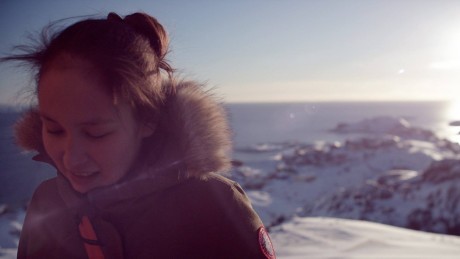Zane Balčus has written this review:
Almost a year has passed since Stefano Savona’s “Samouni Road” started its successful run in festivals, having Cannes Directors’ Fortnight as a take-off platform. And it is still around various events, allowing audiences to discover a strong, touching and visually impressive work of filmmaking.
The film is a subtly evocative canvas of emotional and visual imprints of the past onto the present of the Samouni community in Gaza Strip, following the Israeli army attacks on the enclave in the late 2008, early 2009. The time of the actual events is not explicitly stressed, allowing the film to be a universal story of consequences of suffering, and an instinctive human activity to rebuild its life, to keep on living despite anything. Combining real life footage with black and white animation and 3D reconstructions of drone filming, Savona brings us into the world of an intimate storytelling guided by characters’ memories and delicate visual style.
“Samouni Road” developed from Savona’s presence in Gaza when he was
filming the everyday life of the Palestinian enclave during the attacks of Israeli army in 2008-2009. Savona shot and posted online footage as a video blog with an aim to show what really was happening in Gaza, contradicting the official media information from Israeli side. These materials were later turned into the film “Cast Lead” (2009). It was then that the director met Samouni community for the first time – they were farmers that lived further north from Gaza City. Farmers from whom 29 members were killed, whose homes and fields were destroyed along with their traditional lifestyle. And who didn’t believe this would come on them. A year later Savona returned to the community following an information that there would be a marriage taking place – a young couple were about to get married, surrounded by ruins from their former village, which made them question the step they were going to take.
The film is not a straight forward historic account of what happened. Instead it is a journey into the past told from the perspective of various characters. Their recollections surface in everyday conversations or friendly gatherings, and the past appear vividly in their memories. Their stories gradually lead to the harrowing events of the attacks on the community, and those we hear and see are mainly children or young people. The animated sequences introduce members of a generation of grown-up men, their fathers who haven’t survived. The growing anxiety in the community with the approaching attacks are presented with a mixture of animated scenes which are intercut with recreated surveillance footage. Even though we already know what the outcome will be, the scenes are filled with great tension that culminates in the episode of the command to carry out the attack. Like in a Hitchcockian suspense scene gone wrong, when the good characters are killed, we witness the same – and that is the strength of it: to know and see what both sides are doing, with no possibility to intervene.
Usage of animation and recreated drone images are visually contrasting. In flickering animated scenes, we see the facial expressions of characters, as opposed to the drone footage where people are just undistinguishable white shapes. The juxtaposition of the two mediums – first more associated with fantasy and imagination, second with neutral observation – invites to think about “discourse of sobriety” attributed to documentary, which with the anonymity of drone images seems very explicit here.
Savona strives for representation of animated and drone images to be as close to reality as possible. The filmed characters look like themselves in the animated scenes. The specific style of animator Simone Massi is a perfect choice for this material. Using a technique that resembles engravings, where the black image is a starting point from which light lines appear, the dark colour dominates. Meticulously reconstructed environment of the community, including different locations, houses, people (Savona uses the word “archeologically” to describe the way how they aimed at reconstructing the lost place of the community*). The flickering quality creates an additional fragility and sensibility to the images, constituting the memory realm in a very specific and stark way. The same precision is used for reconstruction of drone and helicopter surveillance images, which are based on testimonies and investigative documents. This sequence is the first one in the film in which the exact time frame is introduced – the drone footage has a little mark on the edge of the frame stating the time when the footage is recorded: 04/01/2009.
From the mid to late 2000s more and more documentarists have chosen to use animated sequences as a means of visual expression to create scenes that have not, could not or cannot be filmed with direct documentary approach. Especially war related topics are interpreted in such a way (for example, “Operation Homecoming: Writing the Wartime Experience” (Richard Robbins, 2007) “Chris the Swiss” (Anja Kofmel, 2018), and others). Use of different techniques and technologies can augment the possibilities of documentary for the stronger impact on spectators and artistic expressivity of the director.
By combining documentary filming and animation (and specifically Massi’s style) with drone footage Savona in “Samouni Road” has managed to bring together realms of subjective memory, neutral observation and imagination – a strong combination for a powerful film.
Zane Balčus
*Interview with Stefano Savona by Jean-Michel Frodon, https://www.docandfilm.com/wp-content/uploads/2018/08/SAMOUNI_ROAD_DP_INTER-VDEF.pdf
La strada dei Samouni, 2018, France/ Italy, 129’












